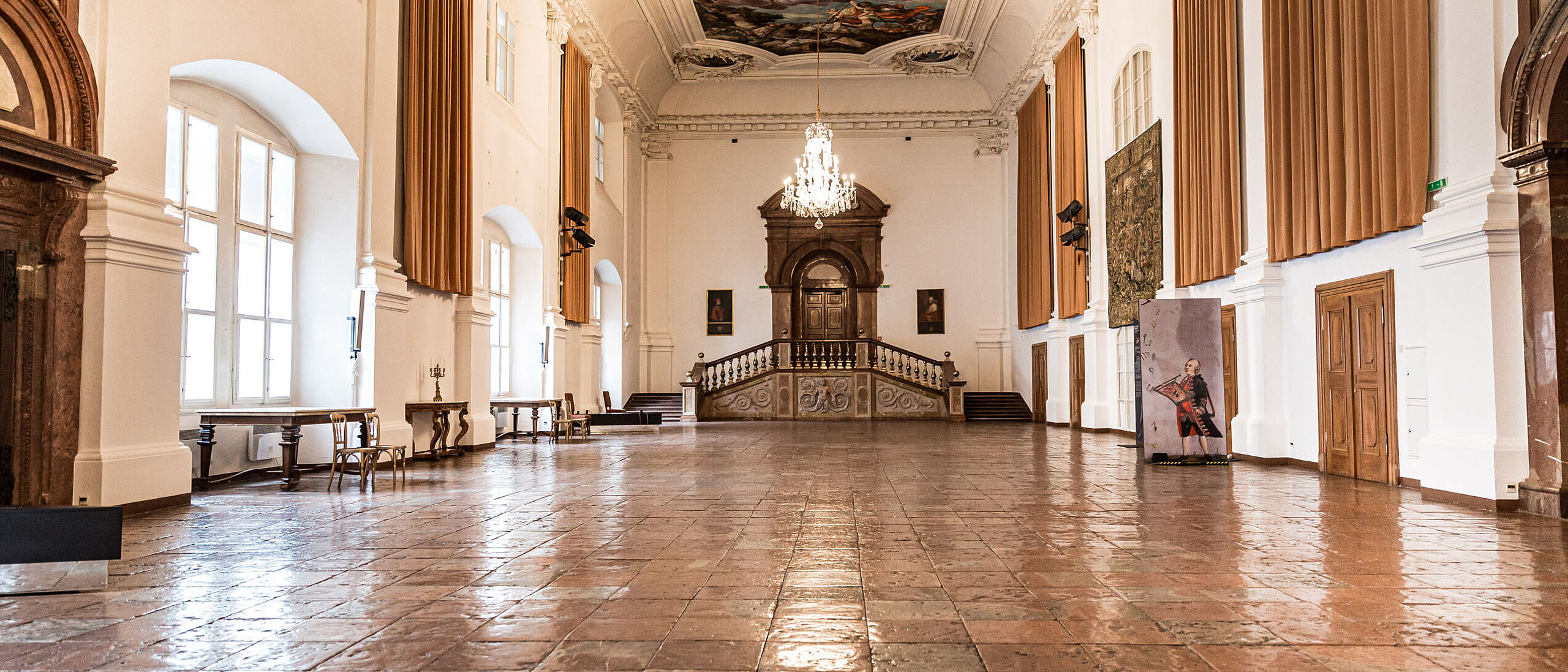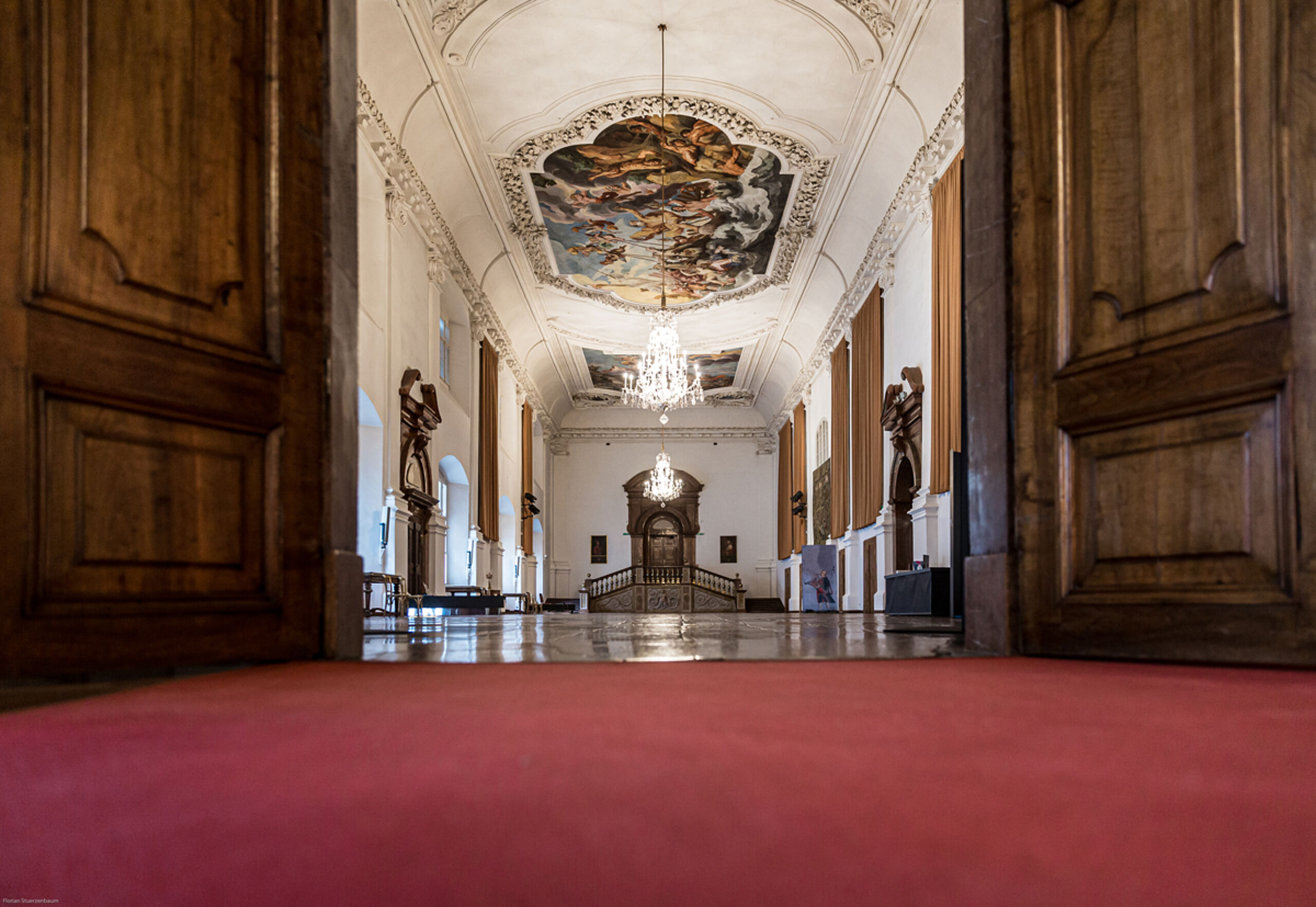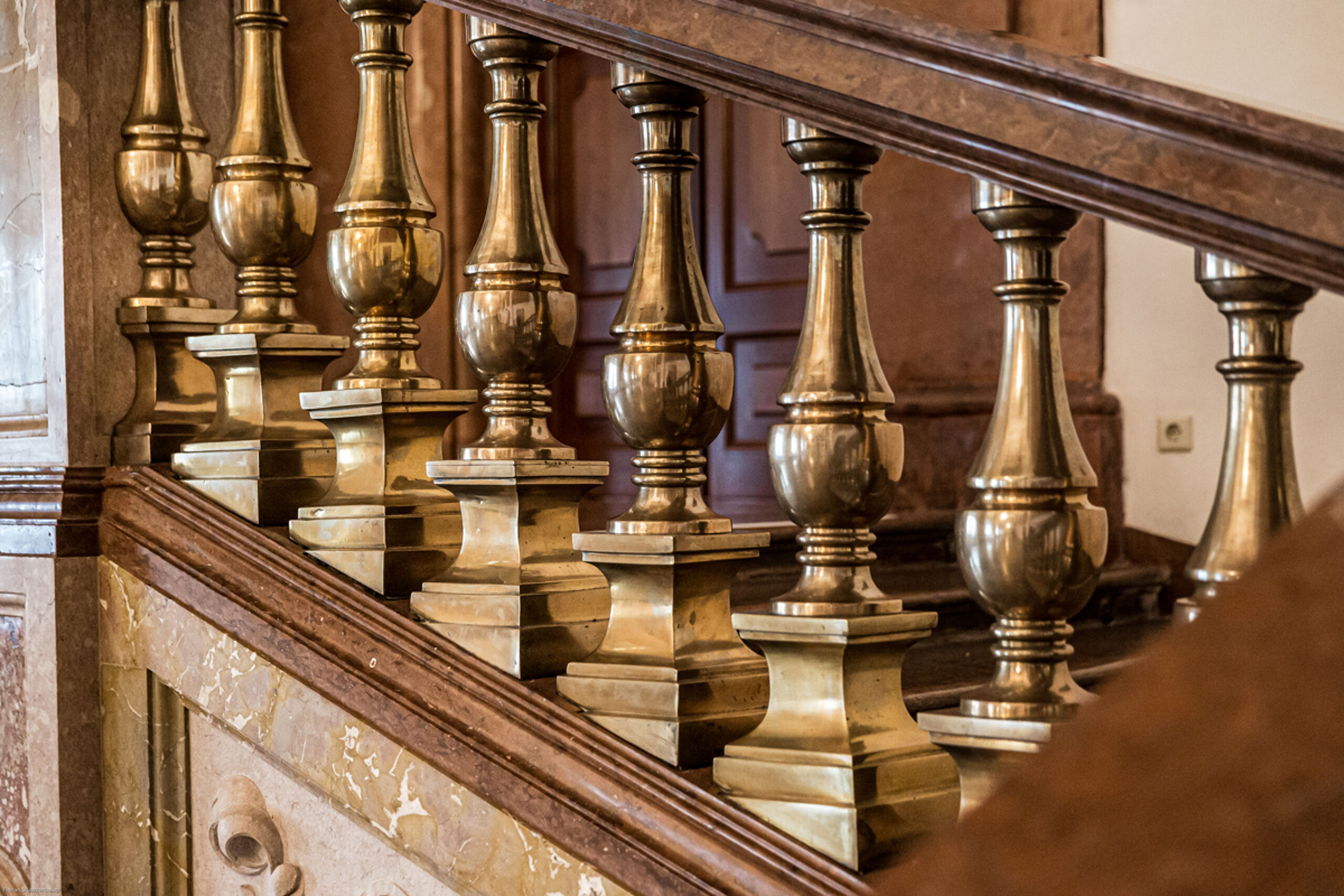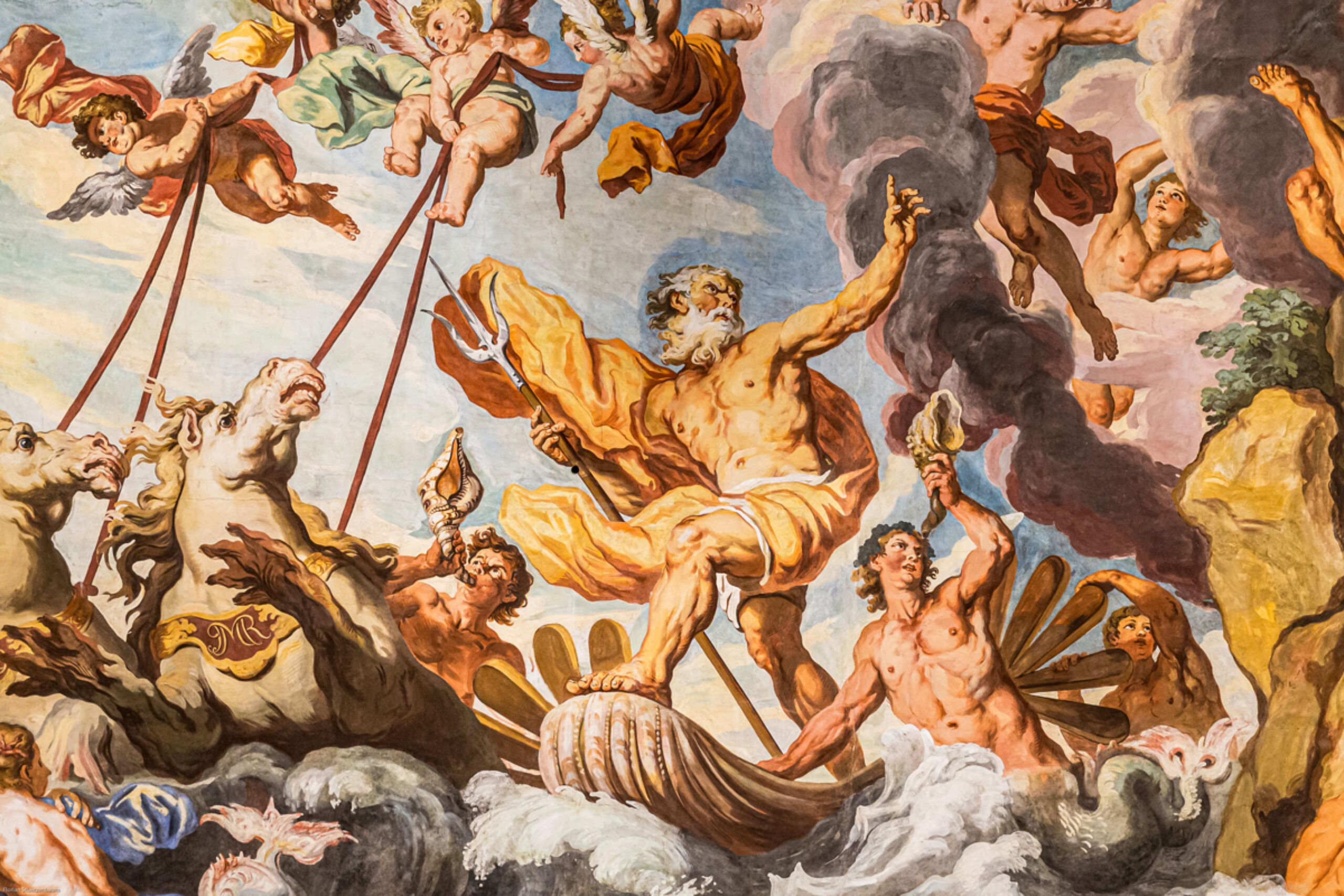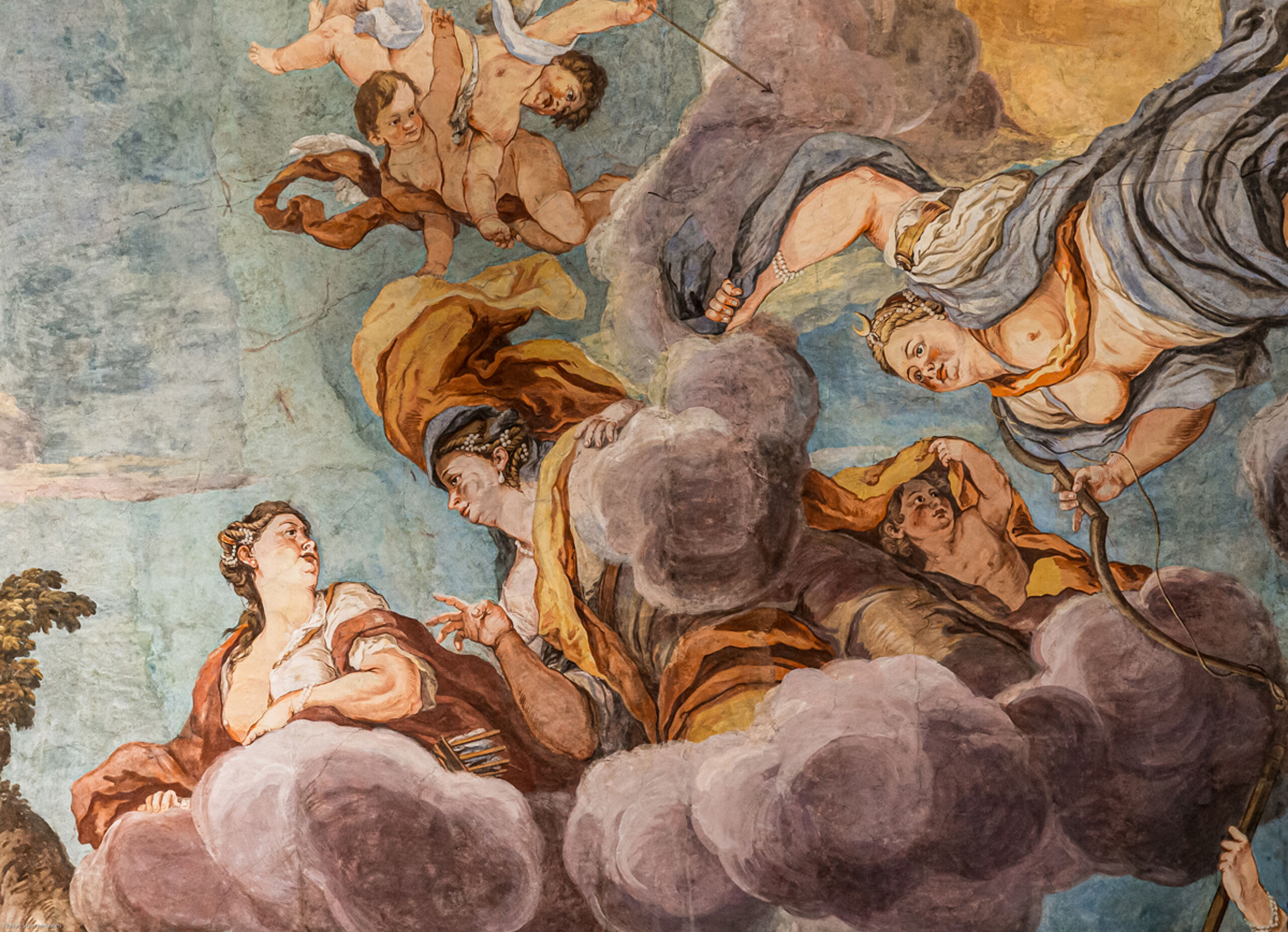The Carabinieri Hall – 50m long, 12m wide and equally high – is the largest room in the Residenz. As ever, it is the first room to pass through on the way to the inner sanctum of the archiepiscopal private quarters.
The hall is so called because the bodyguard of Prince-Archbishop Wolf Dietrich von Raitenau (1587-1612) was stationed here. Established after the model of the papal Swiss Guard, this was a mounted guard, equipped with leather shields, halberds and wheel-lock carbines. Some of these weapons are displayed in a show-case on a side wall.
From the beginning, this hall was the scene of grand celebrations and balls, expressing baroque joie de vivre and demonstrating the court's prestige. Theatrical performances were an integral part of festive occasions, and Monteverdi's L'Orfeo, staged here in 1614, was the very first opera performance north of the Alps.
The power of the rulers and their status within the Holy Roman Empire was magnificently emphasised in the ceiling fresco by Johann Michael Rottmayr, dating from the late 17th century. The four elements (earth, water, air and fire) are represented in the mythological journey of Aeneas to Italy. Mastery of the elements, and thus of the world, symbolises the absolutist self-conception and claim to power of Salzburg's spiritual and secular rulers.
| Rooms | |||||||||
| Carabinieri Hall | 525 | 170 | 396 | 123 | 114 | 376 | 525 | 50x12 | 640,80 |
| Knights Hall | 250 | 108 | 160 | 64 | 69 | 186 | 250 | 25x10 | 254,18 |
| Conference Hall | 160 | 76 | 99 | 40 | 44 | 120 | 160 | 14,94x12,82 | 189,26 |
| Antecamera | 60 | 27 | 55 | 34 | 21 | 56 | 60 | 10,05x9,85 | 99,19 |
| Audience Hall | 90 | 48 | 90 | 42 | 36 | 30 | 100 | 13,79x9,84 | 134,97 |
| Throne Room | 120 | 48 | 132 | 52 | 52 | 120 | 120 | 20,24x8,76 | 177,44 |
| White Hall | 120 | 48 | 108 | 48 | 42 | 96 | 120 | 19,46x8,80 | 171,48 |
| Imperial Hall | 150 | 89 | 88 | 56 | 48 | 88 | 150 | 19,42x9,11 | 176,35 |
| Inner courtyard with arcades | 525 | - | - | - | - | - | 525 | - | 1.070 |

